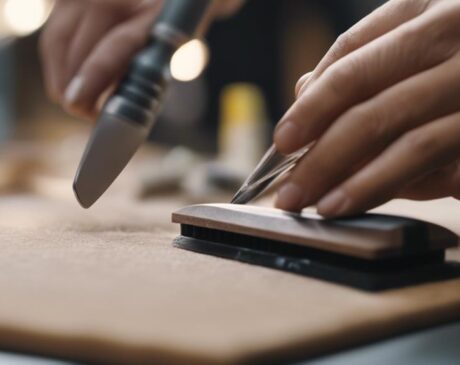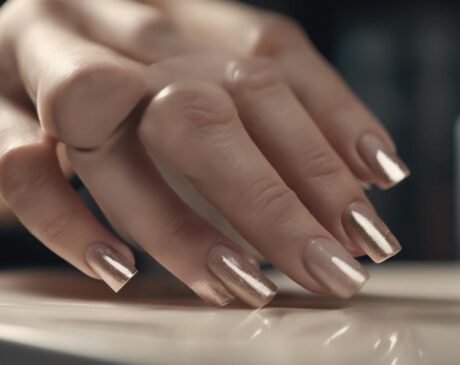Can I put super glue on my broken nail?

Nail injuries are a common problem faced by many people. Whether it’s due to daily activities or an accident, broken nails can cause more than just pain. It can also be a source of frustration, especially if it ruins the aesthetics of well-maintained hands. However, in our quest for a quick fix, an unusual solution often comes to mind: strong glue. This article takes an in-depth look at the practicality and safety of using Power Glue to repair nails.
Understanding Nail Damage
Types of Nail Damage
Nail damage comes in many forms, each of which requires a different approach to repair and care:
Minor cracks and splits: these are small cracks in the nail that do not usually reach the nail bed. They can be caused by everyday activities such as typing or housework.
Severe breaks: more serious than cracks, these breaks can be painful and may expose the nail bed. They are usually caused by accidents or strong impacts.
Causes of broken nails
Understanding the causes of broken nails is crucial to preventing future damage:
Accidents and physical impacts: activities such as sports or physical labor increase the risk of nail trauma.
Nutritional deficiencies and health conditions: Lack of essential nutrients or underlying health problems may cause nails to weaken, making them more susceptible to damage.
Superglue: a quick fix?
What is superglue?
Super Glue, chemically known as cyanoacrylate, is a fast-acting adhesive. Its ability to bond quickly and firmly to a variety of surfaces makes it a popular choice for emergency repairs.
Superglue in Emergency Repairs
In everyday life, people often use superglue as a quick solution to fix a variety of items, from broken household items to small personal items like torn nails.
Using superglue on nails: pros and cons
Advantages of using superglue
- FAST FIX AND EASY TO USE: Superglue quickly bonds broken parts of the nail, providing an immediate solution. It is also easily available in most households.
Risks and Disadvantages
- Skin irritation and potential for chemical exposure: Power Glue can cause skin irritation and allergic reactions. Its chemical composition is not suitable for prolonged skin contact, which makes it a dangerous option for nail repair.
Safe use of Power Glue on nails
Step-by-step guide
- Prepare Nails: Thoroughly clean and dry nails before use.
- Apply glue: apply a small amount of glue to the break and press it together.
Tips to minimize risk
- Use the smallest amount: Use the smallest amount of glue to avoid overexposure.
- Avoid skin contact: Be careful not to get glue on your skin or cuticles as it can cause irritation.
Alternatives to Strong Glue
While Power Glue can be a quick fix for broken nails, there are safer and more suitable alternatives.
Nail Glue and Adhesives
Unlike Power Glue, nail adhesives are specially formulated for nail use. They are less likely to cause skin irritation and are designed to provide a strong bond without damaging the nail. Compared to Power Glue, nail adhesives strike a balance between strength and safety, making them a better choice for nail repair.
Professional Nail Repair Solutions
- Visit a nail technician: for serious nail damage, professional nail technicians can provide expert restoration services. They use proper materials and techniques to minimize nail damage.
- Salon treatments for broken nails: Salons offer a variety of treatments such as silk wraps and gel overlays that not only repair nails but also strengthen them to prevent future breakage.
Long-term nail care and maintenance
Maintaining healthy nails requires a proactive approach:
- Preventing nail breakage: Regular manicures, avoiding harsh chemicals, and wearing gloves when doing household chores can help prevent nail damage.
- Nutritional tips and protective measures: A diet rich in vitamins and minerals such as biotin, vitamin E, and calcium can promote healthy nails.
- Strengthening weak nails: There are many products available to strengthen nails, such as nail hardeners, and home remedies such as olive oil soaks.
Myths and misconceptions about nail repair
There are many misconceptions about nail care and repair. It is important to understand that not all home remedies are effective or safe, and some may even do more harm than good. Proper nail care based on scientific evidence and professional advice is essential to maintaining healthy nails.
Expert advice and recommendations
- Insights from dermatologists and nail technicians: Consult an expert for personalized advice, especially if you have recurring nail problems or suspect an underlying health condition.
- When to seek professional help: It’s important to seek professional medical or salon advice if your nails are badly injured, or if there is an infection or persistent pain.
While strong adhesive can be a quick fix for broken nails, the risks often outweigh the benefits. Safer alternatives include specially formulated nail adhesives and professional salon treatments. Long-term nail health is best maintained through proper care, a nutritious diet, and the use of appropriate products. Always prioritize safety and health when undergoing nail restoration.
Frequently Asked Questions
- Can a strong gel cause long-term damage to my nails? Yes, prolonged or frequent use can weaken the nail structure.
- How long can I keep superglue on my nails? It is recommended to keep it on for as short a time as possible and remove it safely.
- Is it safe to use Power Glue to repair my nails during pregnancy? It is best avoided due to potential chemical exposure.
- Can I paint over nails fixed with Power Gel? This is not recommended as the polish may not adhere well and may cause further damage.
- What should I do if I get glue on my skin? Gently soak and gradually remove the glue without applying pressure and seek medical attention if necessary.




